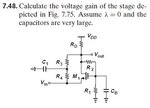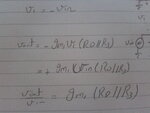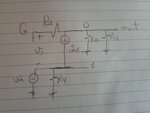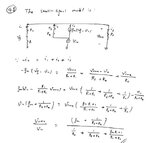MahmoudHassan
Full Member level 6
Hello
while i was solving problems in Common gate amplifier i found this one
Figure 1 is the problem
Figure 2,3 my solution and small signal model
Figure 4 is the solution manual solution
i doubt that solution manual is not correct because it is supposed that all capacitors must be shorted (i.e as the problem that capacitors are very large) which will simplify the problem too much
i hope you can help me to know what is wrong with my analysis and why solution manual solved it like that
Thanks




.
while i was solving problems in Common gate amplifier i found this one
Figure 1 is the problem
Figure 2,3 my solution and small signal model
Figure 4 is the solution manual solution
i doubt that solution manual is not correct because it is supposed that all capacitors must be shorted (i.e as the problem that capacitors are very large) which will simplify the problem too much
i hope you can help me to know what is wrong with my analysis and why solution manual solved it like that
Thanks




.